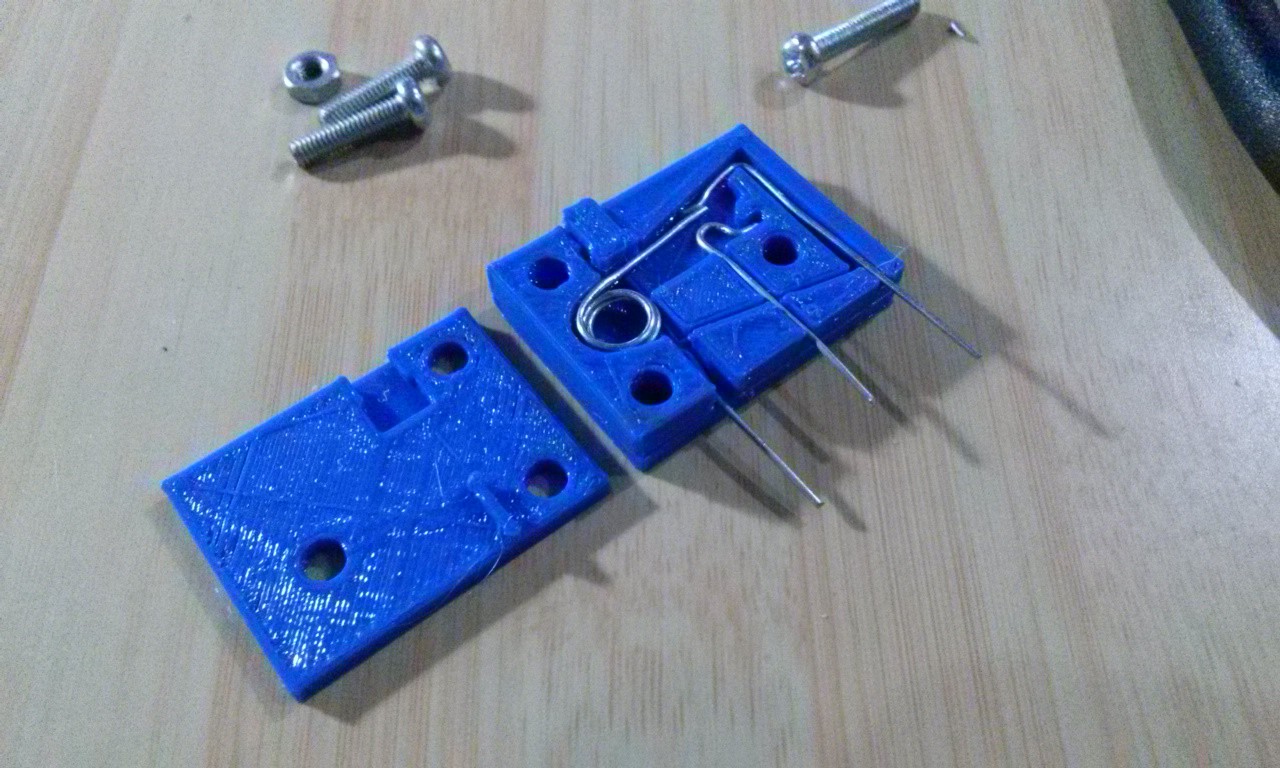March 1, 2016 | ProgressTH 3D printers sit there, with a spool of filament, just waiting for you to come up with an idea or a need to fulfill with a printed component. With a few other common supplies usually on hand either in a public or private makerspace, a whole system of component designs can be developed and set aside for use as the need arises.

Recently, while working on V.2 of our DIYbio centrifuge, the need for a microswitch arose. We couldn't find one nearby at our favorite electronics store, and we didn't feel like ordering them online. That's when we wished for a quick 3D printed fix but none seemed available.
Although we certainly could buy/order microswtiches in the time it would take to research, design, and develop our own 3D printed version, we thought this would be an interesting project to undertake and it would serve us and others well in the future if it works out.
Using SketchUp and 1mm diameter steel wire we already had on hand, we designed and printed out V.1 of the microswitch. There is a lot of room for improvement, but in half a day we had what was a functional mircoswitch. V.2 we hope will be good enough to publish on Thingiverse.
For now, it is fastened with 3mm bolts so we can open and close it easily. The contacts are not very reliable, but with a multimeter it does function. In the future, it would be designed to be more or less permanently sealed, reliable, and the 3mm holes will be used instead to mount the component in a project.
We also have a little experience designing 3D printed buttons and battery packs, so those will be added to this collection. There is also a need for buses when connecting multiple jumper wires to single Arduino terminals (like GND). Usually this requires some ugly hacks using headers. Custom designed components might fill in for this role nicely.
All of these will use basic inputs you would likely already have on hand, or that you can buy and keep on hand to use for a wide variety of components. In other words, it would be like your 3D printing filament, one single input with many different possible outputs.
Follow ProgressTH.org on Facebook here or on Twitter here.
 ProgressTH
ProgressTH
Discussions
Become a Hackaday.io Member
Create an account to leave a comment. Already have an account? Log In.